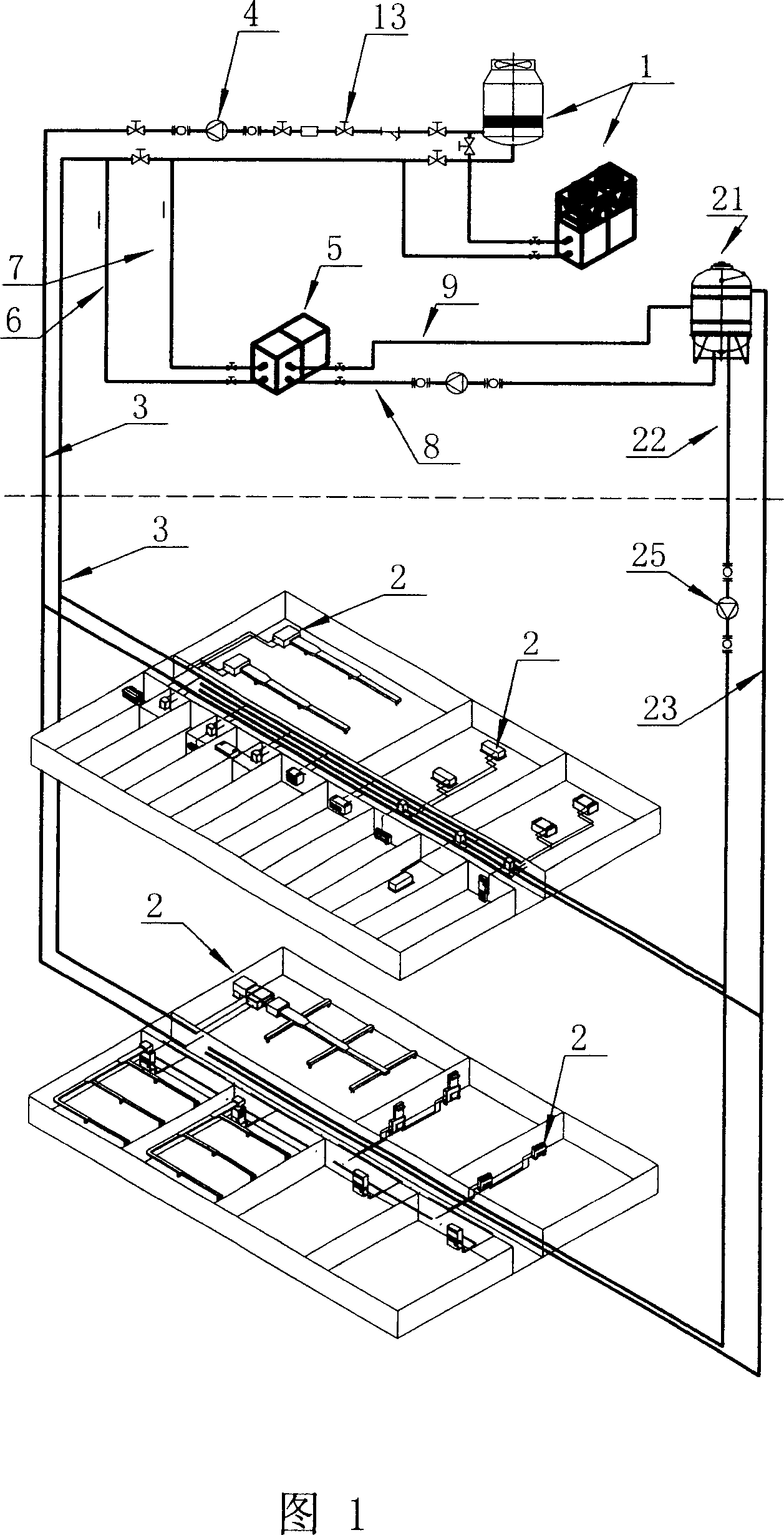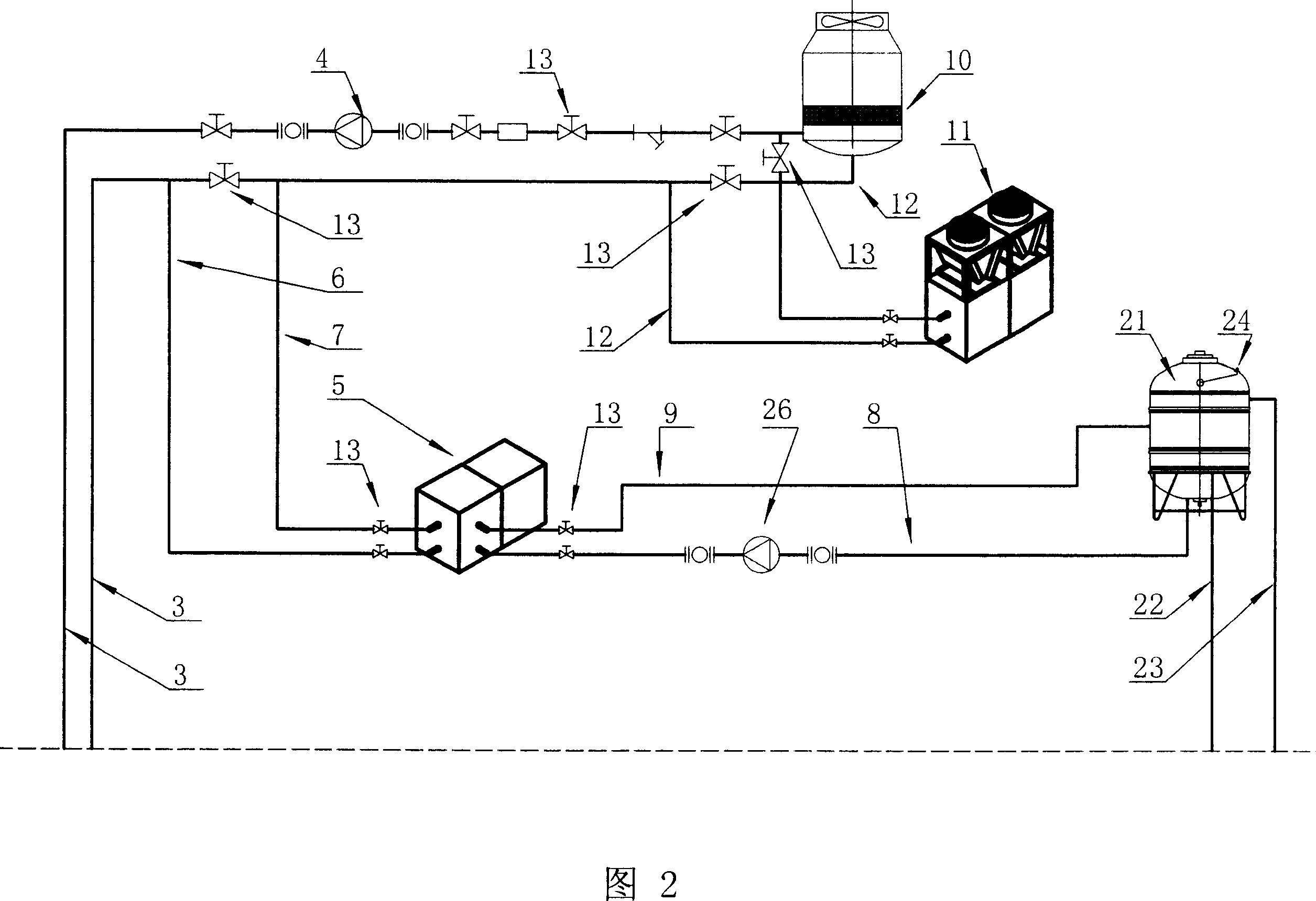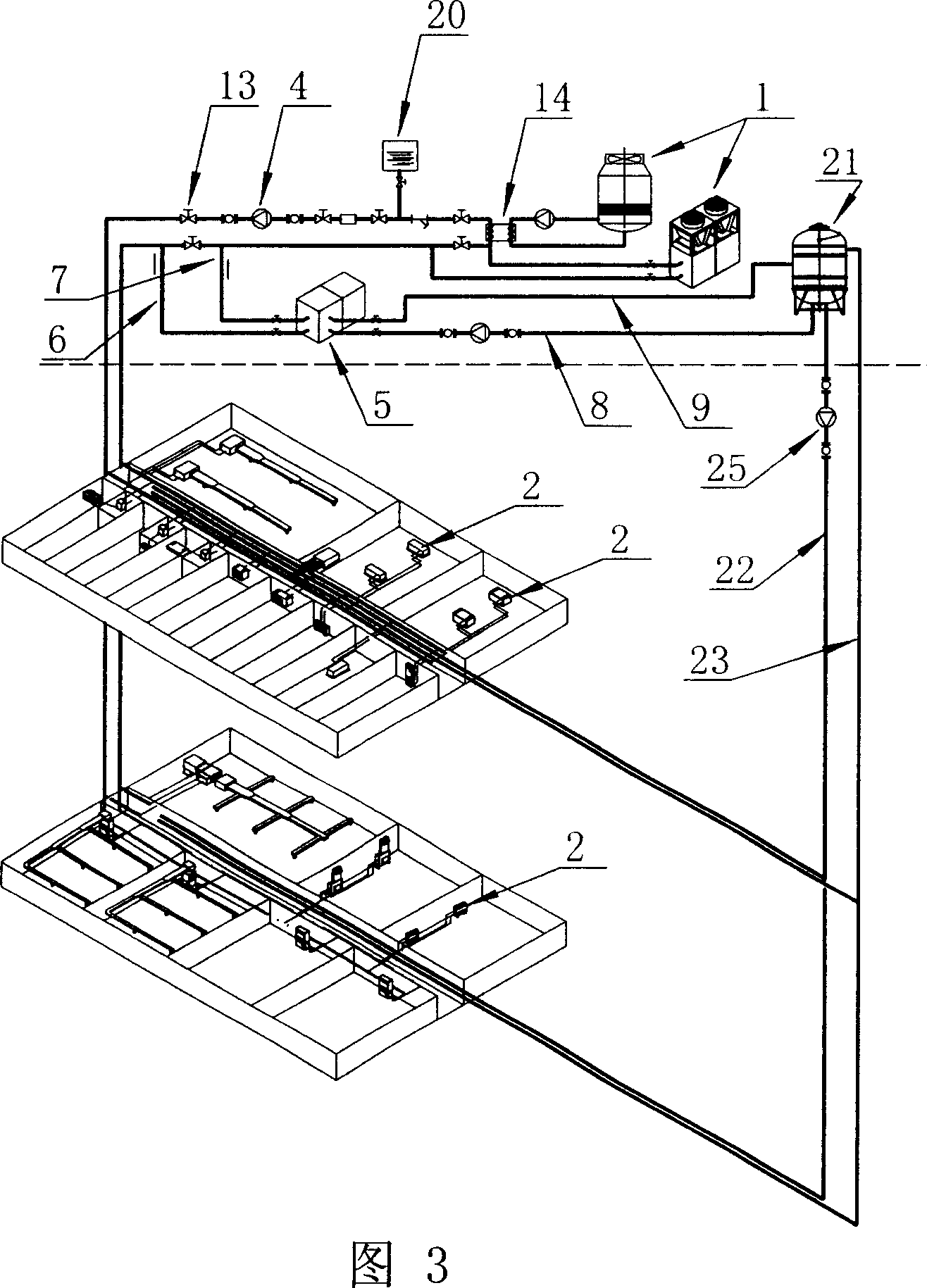Architecture refrigerating, heating and hot water supply integrated system
A technology for combined systems and buildings, applied in the field of combined heat exchange devices, can solve the problems of low heat exchange efficiency, high energy consumption, shortened condenser life and other problems, achieve high heat utilization rate, high hot water temperature, and avoid freezing Effect
- Summary
- Abstract
- Description
- Claims
- Application Information
AI Technical Summary
Problems solved by technology
Method used
Image
Examples
Embodiment 1
[0045] Please refer to Fig. 1 and Fig. 2, the combined system of building refrigeration, heating and hot water supply, including room air conditioning part 2, circulating water pipe 3, water pump 4, external heat dissipation and heat absorption equipment 1 composed of cooling tower 10 and air source heat pump 11 ; the cooling tower 10 in the heat-absorbing equipment 1 and the air source heat pump 11 are connected in parallel to the circulating water pipe 3 through the connecting pipe 12, and the connecting pipe 12 connected to the cooling tower 10 and the circulating water pipe is provided with a valve 13. The two connecting pipes 12 connecting the air source heat pump 11 and the circulating water pipe 3 are provided with valves 13; pipeline. There is also a water-water high-temperature heat pump unit. The low-temperature end of the water-water high-temperature heat pump 5 is connected to the circulating water pipe 3 through the low-temperature end water inlet pipe 6 and the l...
Embodiment 2
[0052] Please refer to Fig. 3 and Fig. 4. The difference between this embodiment and Embodiment 1 is that the cooling tower 10, the air source heat pump 11 and the circulating water pipe 3 are connected differently as the external heat-dissipating and heat-absorbing equipment 1. In the embodiment In one, the cooling tower 10 and the air source heat pump 11 are connected in parallel to the circulating water pipe 3, while in this embodiment, the air source heat pump 11 is connected in parallel to the circulating water pipe 3, and the cooling tower 10 exchanges heat with the circulating water pipe 12 The first heat exchange pipeline of the heat exchanger 14 is connected, and a driving water pump 15 is provided on the communication pipe 12 , and the second heat exchange pipeline of the heat exchanger 14 is connected in series on the circulating water pipe 3 .
[0053] In this embodiment, because the cooling tower 10 is exposed to the atmosphere all the year round, the water quality...
Embodiment 3
[0055] Please refer to Fig. 5 and Fig. 6. The difference between this embodiment and Embodiment 1 is that the heat-absorbing device 1 for external heat dissipation is a heat exchanger 16, and the two ends of the first heat exchange pipeline of the heat exchanger 16 are connected in parallel. On the circulating water pipe 3, a valve 13 is arranged between the two connection points of the circulating water pipe 3 and the first heat exchange pipeline of the heat exchanger 16, and a valve 13 is also arranged on the first heat exchange pipeline of the heat exchanger 16. A valve 13; an expansion tank 20 is also provided on the circulating water pipe 3.
[0056] The biggest difference between this embodiment and the first embodiment is that the ground water is used to exchange heat with the water in the circulating water pipe 3, and heat energy is extracted from the ground water or discharged into the ground water. This structure is simple, and can effectively utilize the natural envi...
PUM
 Login to View More
Login to View More Abstract
Description
Claims
Application Information
 Login to View More
Login to View More - R&D
- Intellectual Property
- Life Sciences
- Materials
- Tech Scout
- Unparalleled Data Quality
- Higher Quality Content
- 60% Fewer Hallucinations
Browse by: Latest US Patents, China's latest patents, Technical Efficacy Thesaurus, Application Domain, Technology Topic, Popular Technical Reports.
© 2025 PatSnap. All rights reserved.Legal|Privacy policy|Modern Slavery Act Transparency Statement|Sitemap|About US| Contact US: help@patsnap.com



